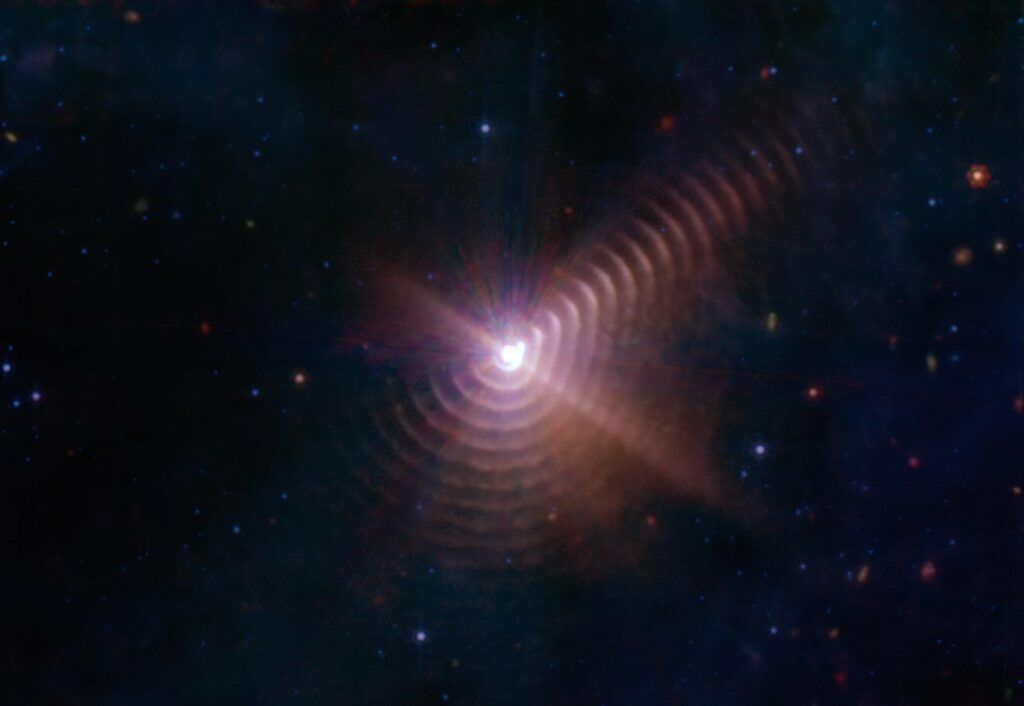At a glance, this might look like a clumsy astronomer smudged a new deep space photo with a fingerprint. Those ridges are actually all part of a new image from the James Webb Space Telescope , the premier observatory in the sky. Astronomers are studying the dust rings wrapped around a duet of stars 5,000 light-years from Earth, known as Wolf-Rayet 140.
All told, the rare cosmic object has 17 visible rings , each created when a pair of stars and their solar winds — gasses flowing off the stars — collided and compressed , according to NASA . Telescopes on Earth have only been able to see two of those rings, or “dust shells. ” “I was puzzled by what I saw in the preview images,” said Ryan Lau, an astronomer at the National Science Foundation’s NOIRLab, in a statement .
“There seemed to be a strange-looking diffraction pattern, and I worried that it was a visual effect created by the stars’ extreme brightness. ” But Lau, whose research with a team of scientists was recently published in Nature Astronomy , soon saw the data in its final form, a copious amount of dust rings. Like the rings on a crosscut tree trunk, the dust tells scientists a story about its age.
These two stars’ elongated orbits bring them close every eight years. Counted up, the system has produced dust for over a century. An instrument on the telescope that observes long infrared wavelengths indicated that the dust was made out of material one would expect from a Wolf-Rayet star .
A Wolf-Rayet is a near-death blue-white star, born 25 times more massive than the sun. Because it is old and close to collapsing into a black hole , it burns hotter and generates powerful gas winds. Want more science and tech news delivered straight to your inbox? Sign up for Mashable’s Top Stories newsletter today.
NASA explains the complicated process of turning space gasses into dust with a metaphor of how baking bread starts with flour: What makes the photographed Wolf-Rayet 140 system unique is its dust ring pattern. Because of the two stars’ orbits, their winds only clash and make dust when they get close to each other. With other Wolf-Rayet duos, they can churn out dust nonstop.
Astronomers believe these systems play an important role in star and planet formation, but so far they’ve only found about 600 in the Milky Way. Based on calculations, they estimate there should be at least a few thousand, according to NASA. The new study makes the strongest case with data to indicate that Wolf-Rayet stars produce carbon-rich dust molecules, the same chemical that largely makes up humans and other life on Earth.
Scientists believe more such studies with Webb will reveal how these stars mold material between them to trigger new star and galaxy births. It worked! NASA successfully moved a stadium-sized asteroid. NASA’s asteroid crash captured in dramatic before and after pictures Stunning photo of Jupiter’s largest moon marks 10 years of service for Juno New James Webb image lets us see Jupiter for the trippy place it is ;.
From: mashable
URL: https://sea.mashable.com/life/21612/webb-telescope-sees-rare-star-duo-rife-with-dust-rings
